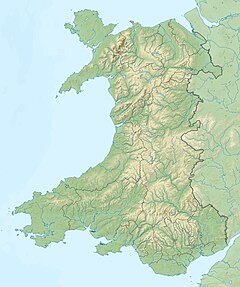Long Hole Cave
This is an old revision of this page, as edited by Monkbot (talk | contribs) at 21:16, 18 January 2021 (Task 18 (cosmetic): eval 1 template: hyphenate params (1×);). The present address (URL) is a permanent link to this revision, which may differ significantly from the current revision.
| Location | between Paviland and Port Eynon |
|---|---|
| Region | Wales |
| Coordinates | 51°32′34″N 4°14′5.6″W / 51.54278°N 4.234889°W / 51.54278; -4.234889 |
| Type | limestone cave |
| Site notes | |
| Excavation dates | 1861, 1969 |
| Archaeologists | E. R. Wood, J. B. Campbell |
Long Hole, also spelled Longhole, is a limestone cave on the south coast of the Gower Peninsula between Paviland and Port Eynon. It is relatively small, measuring about 15 m (49 ft) deep after several excavations. It was first excavated in 1861 by Colonel E. R. Wood. Wood found evidence of a lithic assemblage and faunal remains. The faunal remains included cave hyena, reindeer, Woolly rhinoceros, mammoth, straight-tusked elephant and wild horse.[1]
A second excavation was conducted in 1969 by J. B. Campbell. Analysis of the evidence from the two excavations, including sediment and pollen as well as the lithic evidence, has identified Long Hole as an Aurignacian site contemporary with and related to the site at Paviland, evidence of the first modern humans in Britain.[1]
References
- ^ a b Dinnis, R (2012). "Identification Of Longhole (Gower) As An Aurignacian Site". Lithics: The Journal of the Lithic Studies Society. 33: 17–29. Retrieved 3 August 2016.
| Geographical areas | |
|---|---|
| Beaches listed clockwise | |
| Headlands | |
| Villages in Gower |
|
| Prehistoric sites | |
| Castles | |
| Lighthouses | |
| Other | |
| People |
|


